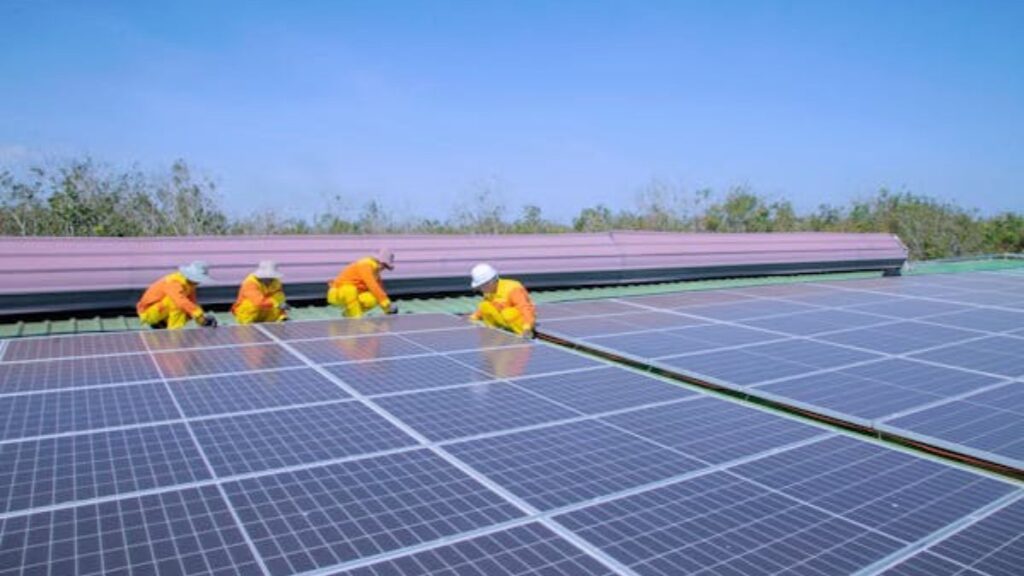With the growing popularity of solar energy, more homeowners are considering solar panel installations as an eco-friendly and cost-effective energy solution. However, before installing solar panels, it’s essential to ensure that your roof can handle the added weight. Roof load capacity is a critical factor, as installing solar panels on a roof that isn’t structurally sound can lead to damage and potentially dangerous situations. Here’s a guide to help you understand roof load capacity and what to consider before installing solar panels on your home.
1. Assessing Roof Load Capacity
Roof load capacity refers to the amount of weight a roof can safely support without risking structural damage. This capacity is measured in pounds per square foot (psf) and depends on factors such as the roof’s materials, construction, age, and current condition. Solar panels typically add around 2-5 psf of weight to a roof, but additional components like mounting brackets and racks can contribute more weight.
If you’re unsure about your roof’s load capacity, it’s wise to consult a structural engineer or a professional roofing contractor to assess whether your roof can support the added weight. An experienced roofing company in Chantilly can conduct a load assessment, evaluate your roof’s condition, and suggest any necessary reinforcements or repairs to ensure it’s ready for solar installation. Proper evaluation of load capacity is essential to avoid potential issues and maintain the safety of your home.
2. Understanding Roof Type and Material
Different types of roofs, including asphalt shingles, metal, tile, and flat roofs, have varying load capacities. Asphalt shingle roofs are commonly used and generally sturdy enough to support solar installations, while metal roofs are lightweight and durable, making them an excellent choice for solar panels. Tile roofs, however, may require additional support as tiles can be more brittle and prone to breakage.
Each roof type also has different requirements for mounting solar panels, so understanding the material can help determine the best installation method. For instance, metal roofs may allow for direct mounting, while tile roofs often need special brackets to prevent damage. Knowing your roof type and its compatibility with solar installations can help you and your installer make informed decisions about mounting options and any additional reinforcement needed.
3. Checking Roof Age and Condition
The age and condition of your roof play a significant role in its ability to support solar panels. Older roofs may have weakened structural components due to wear and tear, making them less ideal for a solar installation without reinforcements. If your roof is approaching the end of its lifespan, consider replacing it before adding solar panels, as this will avoid the need to remove the panels for future roof repairs or replacement.
A roof inspection can help identify any signs of damage or weakness, such as cracked shingles, rusted flashing, or water leaks, which may need addressing before installation. Installing solar panels on a damaged roof can lead to further deterioration and may even void the warranty on your solar panels or roof. Ensuring your roof is in good condition will support a safe and effective solar installation that lasts.
4. Factoring in Snow and Wind Loads
In addition to the weight of the solar panels, other environmental factors, such as snow accumulation and wind, impact roof load capacity. In regions with heavy snowfall, snow load can add significant weight to the roof during winter months. Installing solar panels on a roof with low snow load capacity could increase the risk of structural failure under heavy snow.
Wind load is another important consideration, as solar panels increase the surface area on the roof and may catch strong winds during storms. High wind areas may require additional brackets or anchoring to secure the panels and prevent uplift. It’s essential to work with an installer who understands local climate conditions and can design a system that accounts for these external factors, ensuring your solar panels stay secure and your roof remains safe.
5. Planning for Structural Reinforcement
If your roof assessment reveals that it cannot handle the additional load of solar panels, there are options for structural reinforcement. Truss calculations play a crucial role in determining the necessary adjustments, ensuring the roof structure can safely support the added weight.. This process may involve adding extra support beams, reinforcing existing trusses, or replacing weakened areas to strengthen the roof’s overall load-bearing capacity. Structural reinforcement is especially important for older homes or roofs made from materials with lower weight tolerances.
While reinforcement can add to the upfront cost of a solar installation, it ensures the longevity and safety of your setup. Skipping this step can lead to costly repairs or even roof failure down the line. Consulting with a roofing professional who can assess and execute the necessary reinforcements will provide peace of mind and protect your investment in solar technology.
6. Partnering with Qualified Installers and Contractors
A successful solar installation requires collaboration between qualified solar installers and experienced roofing contractors. Solar installers specialize in panel installation and energy systems, while roofing contractors understand roof structures and load requirements. Working together, they can ensure that your roof is prepared for solar installation and that the panels are mounted securely.
Look for installers and contractors with experience in solar installations and an understanding of local building codes and requirements. Proper installation by knowledgeable professionals will help you avoid potential issues and maximize the lifespan of both your roof and solar panels. Choosing the right team not only enhances safety but also ensures your solar system operates efficiently and effectively.
Understanding roof load capacity is an essential step in preparing for a solar installation. By evaluating your roof’s condition, material, and structural needs, and working with qualified professionals, you can create a secure and reliable solar setup. Proper preparation will protect your home’s structural integrity and allow you to enjoy the benefits of renewable energy with confidence.







